Zhansaya Abdumalik is one of the most promising young talents of our time. She is from Kazakhstan, a country which has experienced a huge boom in women's chess, especially in recent years. Like her compatriot Dinara Sadukasova, Zhansaya is already among the absolute world leaders and has been in the top list of junior chess players for several years. She is a multiple youth and junior world champion, known for a very aggressive and dynamic playing style.
 Zhansaya has been trained by world-famous chess coach Vladimir Chuchelov.
Zhansaya has been trained by world-famous chess coach Vladimir Chuchelov.
Zhansaya described herself this way:
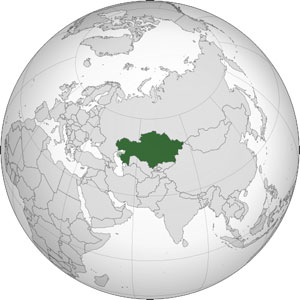 I was born in Kazakhstan, in the city of Almaty. Kazakhstan is a large and beautiful country, which ranks ninth in the world in terms of territory – still I have met people who have never heard of it. I am Kazakh by nationality. The word "Kazakh" is translated from ancient Türkic as "free, independent person". In ancient times we were nomads, roaming the steppes of Kazakhstan. Perhaps that's why I love traveling.
I was born in Kazakhstan, in the city of Almaty. Kazakhstan is a large and beautiful country, which ranks ninth in the world in terms of territory – still I have met people who have never heard of it. I am Kazakh by nationality. The word "Kazakh" is translated from ancient Türkic as "free, independent person". In ancient times we were nomads, roaming the steppes of Kazakhstan. Perhaps that's why I love traveling.
Almaty is the largest city of Kazakhstan, surrounded by the majestic mountains of the Zailiyskiy Alatau. Love for the mountains is instilled in us since our childhood, when every day, waking up, you look out the window and admire their beauty.
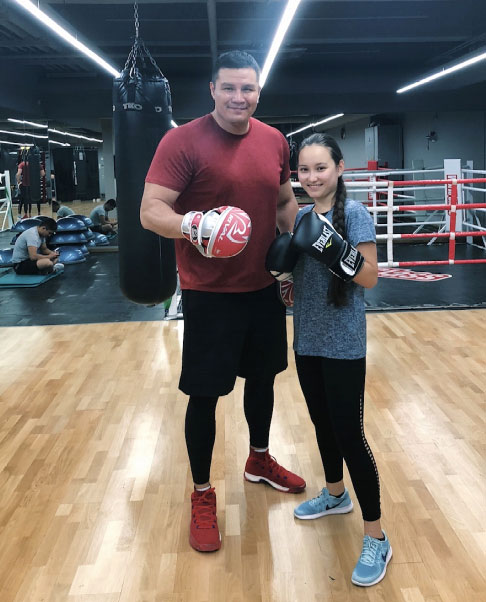
Most of my life I spend at the chessboard. Besides, I am fond of boxing. My trainer is a former silver world champion in heavyweight, a charming and kind friend. By boxing I relieve the stress accumulated after the tournaments.
Currently I am participating in the primaries, the intra-party elections of the largest ruling party in Kazakhstan. My electoral program is aimed at the development of intellectual sports and youth policy.
In 2014, my parents and I founded the Chess Academy in Almaty. At the moment there are three branches of the Academy, where more than 700 children are studying chess. During this time we have brought up several prize-winners of the National championships in different ages, as well as the World and Asian school champion U7. In January 2020, we held a record children's national championship with the participation of 873 young chess players from all regions of Kazakhstan.
My personal path crossed Zhansaya in 2019, during the super women's tournament in St. Louis. Already there she left a lasting impression with her lively and open manner. It didn't take too long before I took her into my heart.
At the beginning of the year we met again with Anna Muzychuk in Gibraltar, and one month later at our "last" women's Bundesliga encounter in Hofheim we made a plan that in autumn 2020 Zhansaya ("Malysh", as Anna and I affectionately call her) would move to Berlin with me – I have a large enough flat. This would make traveling within Europe easier for her and allow several training sessions with Chuchelov.
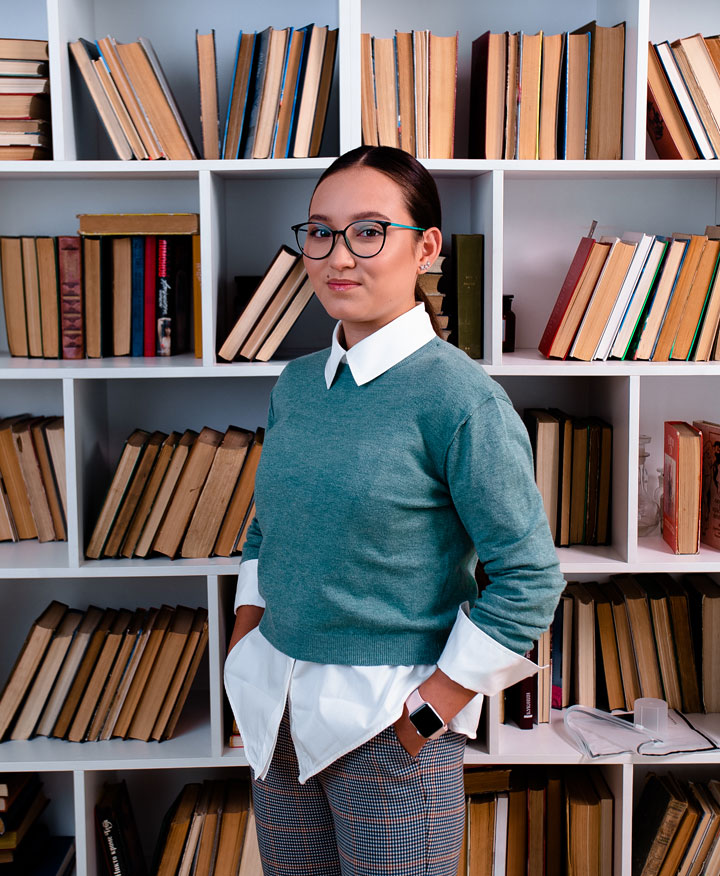
FIDE Women's Grand Prix
Zhansaya's chance to play in the Lausanne Women's Grand Prix 2020 came from unexpected circumstances. It was the last GP tournament before the lockdown, and, just like the Men’s Candidates, was not spared from the Corona crisis.
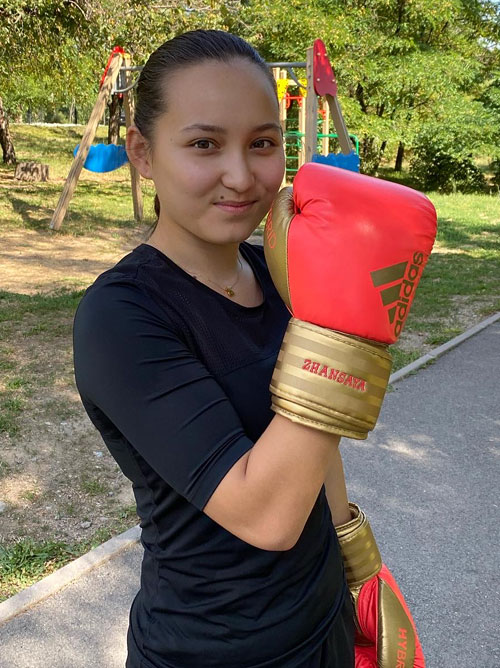 First Chinese player Zhao Xue was forced to cancel the event due to the radical measures taken her country already at the end of January. The place of the first reserve player was held for the Iranian top women player Sarasadat Khademalsharieh, who could not accept the invitation after internal problems arose in her country at the begin of this year, which besides Lausanne also prevented her from playing the Tradewise Chess tournament in Gibraltar.
First Chinese player Zhao Xue was forced to cancel the event due to the radical measures taken her country already at the end of January. The place of the first reserve player was held for the Iranian top women player Sarasadat Khademalsharieh, who could not accept the invitation after internal problems arose in her country at the begin of this year, which besides Lausanne also prevented her from playing the Tradewise Chess tournament in Gibraltar.
So Zhansaya was invited. The news caught Zhansaya while she was playing the last rounds of the Aeroflot Open. Just like MVL in the men’s candidates, she confirmed that being invited at the last moment was fine – in fact a true bliss. She proved herself a perfectly worthy replacement by taking the third place and once again confirmed the strength of her punches.
I chose her game versus Alexandra Kosteniuk, not only to prove that the young promising player from Kazakhstan is ready to knock down more experienced opponents, but also because she managed to make a turning point in her bad personal score against a previously inconvenient adversary.
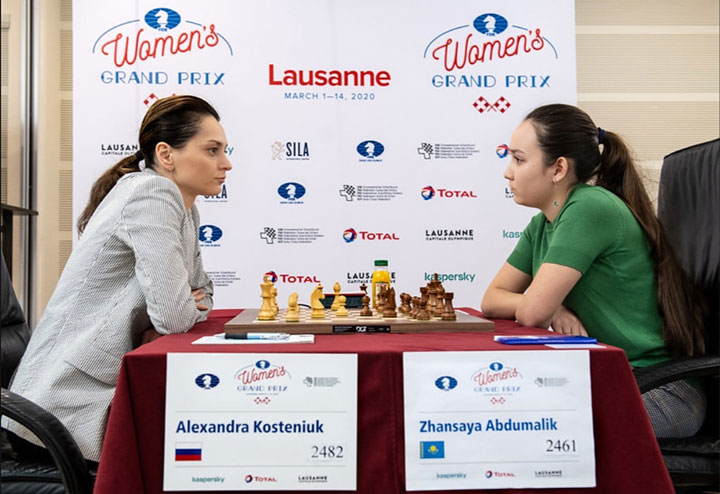
Photo David Llada

[Event "Lausanne WGP 2020"] [Site "Lausanne SUI"] [Date "2020.03.05"] [Round "4.6"] [White "Kosteniuk, A."] [Black "Abdumalik, Z."] [Result "0-1"] [ECO "C84"] [WhiteElo "2482"] [BlackElo "2461"] [Annotator "Eli Pähtz"] [PlyCount "74"] [EventDate "2020.??.??"] {[%evp 0,74,19,36,5,18,26,14,29,5,-5,-7,21,6,11,20,18,20,13,-7,-6,-24,9,-6,-12, -10,-14,-32,-12,-26,-4,-23,23,22,23,0,43,25,52,-7,22,-53,0,-86,-46,-71,34,0,16, -65,18,13,-5,-55,-70,-70,-67,-42,-54,-54,-61,-82,-61,-69,-58,-81,-80,-154,-204, -221,-240,-287,-288,-648,-469,-897,-1294]} 1. e4 e5 2. Nf3 Nc6 3. Bb5 a6 4. Ba4 Nf6 5. O-O Be7 6. d3 {Quite a surprising choice by Kosteniuk, who normally goes for the main line 6.Re1. I suppose she aimed for close structures in order to use her superiour experience versus her very young opponent. Knowing both players yet I dare to claim that Alexandra's greatest strength is to be found in open positions with a very active centre. Thus the setup of d3 compared to Re1-c3-and d4 was perhaps objectively not the best choice.} b5 7. Bb3 d6 8. a4 {An Interesting line which, however did not come as a real surprise for the Kasakhian youngster, who clearly works regularly on chess. Yet it took her a while to remember the main ideas in this position.} Bd7 9. c3 O-O 10. Re1 Na5 11. Bc2 c5 12. Nbd2 Qb6 $5 {One of the key moves in this line, promising an easy plan for Black by pushing the pawns on the queenside and controlling the main central square on d4.} 13. Nf1 b4 14. Ne3 (14. d4 $2 b3 15. Bb1 Qc7 {and Black enjoys a pleasant space advantage on the queenside. In case of} 16. Ne3 {Back could already get superiour after} c4 $15) 14... Rac8 { [#] Novelty} (14... Rfe8 15. d4 cxd4 16. cxd4 b3 17. Bb1 exd4 18. Nxd4 Bf8 19. Nef5 d5 20. e5 Ne4 21. Bxe4 dxe4 22. Rxe4 Nc4 23. a5 Qb7 24. Qe2 Qd5 25. Bg5 Nxe5 26. Re1 Nc6 27. h4 f6 28. Bf4 g6 29. Nh6+ Bxh6 30. Bxh6 Nxd4 31. Qd3 Rxe4 32. Rxe4 Bc6 33. f3 Nxf3+ {0-1 (33) Efimenko,Z (2604)-Sjugirov,S (2662) Douglas 2019}) 15. h3 Rfe8 16. Nd2 $1 {aiming for Ndc4, a very attractive square. If Black would capture the knight later on, the main problem appears in the rather surprising dxc4 which would kill Blacks entire counterplay chances on the queenside and gets stable control of the center. White would then still have the option of attacking on the kingside, whereas Black struggles to find suitable ideas.} Be6 17. Qe2 {Does not follow any specific idea but removes White's queen from potential exposure on the d-file.} (17. Ndc4 $1 {was indeed much more unpleasant, but I guess it was not in Kosteniuks intention to ruin her central and queenside structure.} Nxc4 18. dxc4 {and despite the double pawns, White is slightly better.}) 17... Bf8 {A typical move in the Ruy Lopez, with two key ideas: a) freeing Black's rook and preparing meassure against central opening attemps by White, and b) maybe later on manouvering this bishop via g6 to g7 with potential attacking chances by f7-f5.} (17... d5 $5 {is possible too. However it seems hard to evaluate the position after White's reaction with} 18. c4 $1 {While White gets an excellent square on d5, Black would try bringing her knight via c6 to d4. That regrouping, however, has the disadvantage of giving Kosteniuk another excellent chance of pushing a4-a5 and activing her biggest sorrow child on c2.} (18. exd5 Nxd5 19. Nxd5 Bxd5 20. Qxe5 Bf8 21. Qxe8 Rxe8 22. Rxe8 Qc6 $19 { with the idea of Bxg2.}) 18... dxe4 (18... d4 19. Nd5 Nxd5 20. cxd5 Bd7 21. Nb3 $13) 19. dxe4 Nc6 20. a5 Qc7 21. Ba4 $13) 18. Qf3 (18. Ndc4 $1 {was possible and good again. Yet I believe you can hardly expect this move once it was already rejected, and the only reason – knowing the Russian tactician from my childhood – could be related into the dissatisfaction of the resulting pawn structure.}) 18... Qb7 {I was very satisfied with my position, all my pieces are well coordinated.} 19. g4 $2 {[#] It must have felt like a really unexpected move for my young little teammate who is not so much familiar with her Russian opponents agressive playing style. Without any "contact" square on g5 (Black hasn't yet played h6) this move is mostly considered strategically wrong, especially in a position where the centre is not defined and where White's pieces are still far from a kingside attack. Once again the positionally correct move was Ndc4.} h6 {Finally giving White the contact square on g5, however for the good reason of preventing g5 when Black would be then forced to move her knight and allow White a stronger control over d5. Since White's c1 bishop is still blocked and there is no white knight yet installed on f5, Black has nothing to worry.} 20. Kh2 $2 {Far too slow. White is aiming for Rg1 and g5 but, as already mentioned, the whole concept of a kingside attack is simply premature as the required coordination is missing.} ( 20. Ndc4 $1 {The last chance to control the center.}) (20. Nf5 Nd7 {Against White's thread of Nxh6 followed by Qxf6.} 21. Nf1 d5 {and White would not be able to attack the kingside as there are too many problems caused in the center.} (21... c4 $5)) 20... d5 $1 {Very logical. If you are attacked on the flank try to open the center, so your pieces will get more active and you can use weakness of the opponent king's.} 21. Nf5 Nh7 {Looks natural to control g5 square and to have ideas with g6, besides preventing the already mentioned tactical idea of Nxh6.} (21... Bxf5 $5 {Also strong, to exchange the knight from active square f5 and continue pushing the queenside, even if the g-file is opening, the kingside is well prepared and the counterplay in the center is crushing.} 22. gxf5 c4 $1 23. exd5 cxd3 24. Qxd3 Qxd5 $17) 22. Qg2 dxe4 (22... c4 $1 {More concrete.} 23. dxc4 dxc4 24. Nf3 Nb3 $17) 23. Nxe4 Qd7 {Here Black realized that she has managed to consolidate her pieces and is now more than ready to prepare a counterattack and exloit White's weaknesses on both flanks.} 24. Rg1 Kh8 {Prophylaxis. White still had some ideas with sacrifices on h6 and opening the g-file, so it comes as a natural human desire to be safe.} (24... Nb3 25. Nxh6+ gxh6 26. g5 $13 {Too risky when you are in time trouble.}) 25. Qg3 Nb3 $1 {It appears to be a very good decision to exchange one of the bishops in an open position. While the light-squared one defends a key pawn on d3 the dark-squared bishop is a key to White's kingside attack options. With neither option there Black should be pleased.} 26. Bxb3 Bxb3 $17 {[#]} 27. f4 { White is trying to make the best of it, and getting her undeveloped bishop preferably with a tempo into the game. The weaknesses all over the board, however, are yet too severe to hope for any more chances... Zhansaya did not give her any and converted the remaining part of the game in very clean and technical style.} Rcd8 28. cxb4 cxb4 29. fxe5 Qxd3 30. Qxd3 (30. Ned6 Qxg3+ 31. Rxg3 Rxe5 32. Rxb3 Bxd6 33. Nxd6 Rxd6 34. Bf4 Re2+ 35. Kg3 Rde6 36. Rxb4 g5 $19 ) 30... Rxd3 31. Bf4 Ng5 32. Nxg5 hxg5 33. Bg3 Rc8 34. Rg2 Bd5 35. Re2 b3 36. Rf1 Rc2 37. Rff2 Rd1 0-1
I should mention that Nana Dzagnidze’s victory eventually leaves her a decent chance to join one of the two places reserved for the candidates.
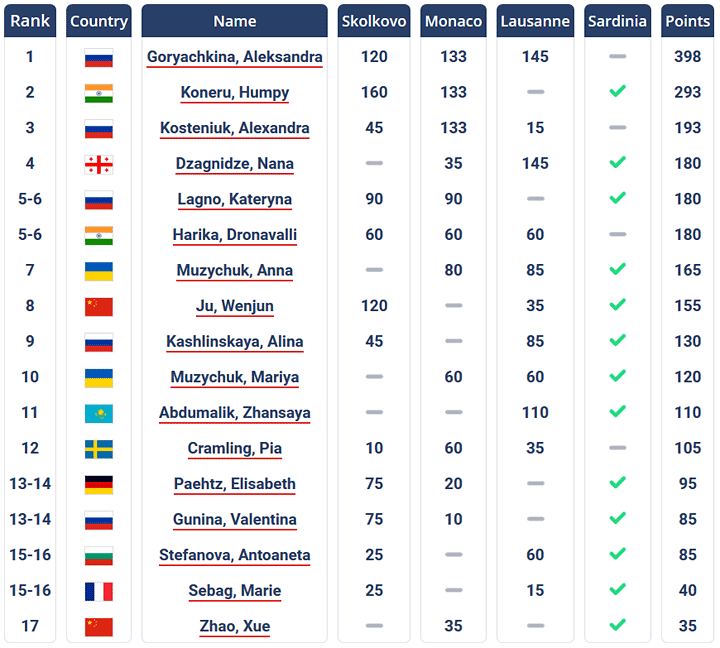
To understand the above table correctly one has to take out Ju Wenjun, as she will be challenging the winner of the candidates tournament, and Aleksandra Goryashkina, who is already qualified as the runner-up of the World Championship match.
The current favourite to take one of the places in the candidates is Humpy Koneru, who is leading the series. Her comeback to chess, after maternity leave, cannot but impress: she has already won two Grand Prix stages and the newly established Cairns Cup tournament of 2020.
Kosteniuk is the current number three, but she has already completed the series and she will likely be overtaken by one of the next few contenders. So the decision of who will make it eventually into the candidates is a battle between Nana Dzagnidze, one of the Russian top players Katerina Lagno, both Muzychuk sisters, Harika Dronavalli and Alina Kashlinskaya. However, when the last stage, which was supposed to be held in Sardinia/Italy between 2nd and 15th of May, is going to be happening, nobody knows.
About the author
 Elisabeth Pähtz (or Paehtz – rhymes with "Rates") is a German WGM and men's IM, currently rated 2473, making her the strongest female player in the country. Elisabeth (or Elli, or Lizzy) was trained in chess from early childhood by her father, GM Thomas Pähtz.
Elisabeth Pähtz (or Paehtz – rhymes with "Rates") is a German WGM and men's IM, currently rated 2473, making her the strongest female player in the country. Elisabeth (or Elli, or Lizzy) was trained in chess from early childhood by her father, GM Thomas Pähtz.
At the age of nine years she won her first German Championship in the under-11 age group. In 1999 she became Germany's women's chess champion. In 2002 Elisabeth became the Youth World Champion in the under-18 age group, and in 2004 the U20 Junior World Champion.
As one of the greatest German new-generation talents she was the subject of a large media interest when growing up. Among other things it was reported that she was likely to fail high school mathematics. Her own explanation for this is that she is an intuitive player, not a universal genius.
Elisabeth holds the FIDE titles of International Master and Woman Grandmaster. She is an active streamer on YouTube.
.jpeg)

















 Zhansaya has been trained by world-famous chess coach Vladimir Chuchelov.
Zhansaya has been trained by world-famous chess coach Vladimir Chuchelov.  I was born in Kazakhstan, in the city of Almaty. Kazakhstan is a large and beautiful country, which ranks ninth in the world in terms of territory – still I have met people who have never heard of it. I am Kazakh by nationality. The word "Kazakh" is translated from ancient Türkic as "free, independent person". In ancient times we were nomads, roaming the steppes of Kazakhstan. Perhaps that's why I love traveling.
I was born in Kazakhstan, in the city of Almaty. Kazakhstan is a large and beautiful country, which ranks ninth in the world in terms of territory – still I have met people who have never heard of it. I am Kazakh by nationality. The word "Kazakh" is translated from ancient Türkic as "free, independent person". In ancient times we were nomads, roaming the steppes of Kazakhstan. Perhaps that's why I love traveling.


 First Chinese player Zhao Xue was forced to cancel the event due to the radical measures taken her country already at the end of January. The place of the first reserve player was held for the Iranian top women player Sarasadat Khademalsharieh, who could not accept the invitation after internal problems arose in her country at the begin of this year, which besides Lausanne also prevented her from playing the Tradewise Chess tournament in Gibraltar.
First Chinese player Zhao Xue was forced to cancel the event due to the radical measures taken her country already at the end of January. The place of the first reserve player was held for the Iranian top women player Sarasadat Khademalsharieh, who could not accept the invitation after internal problems arose in her country at the begin of this year, which besides Lausanne also prevented her from playing the Tradewise Chess tournament in Gibraltar. 








